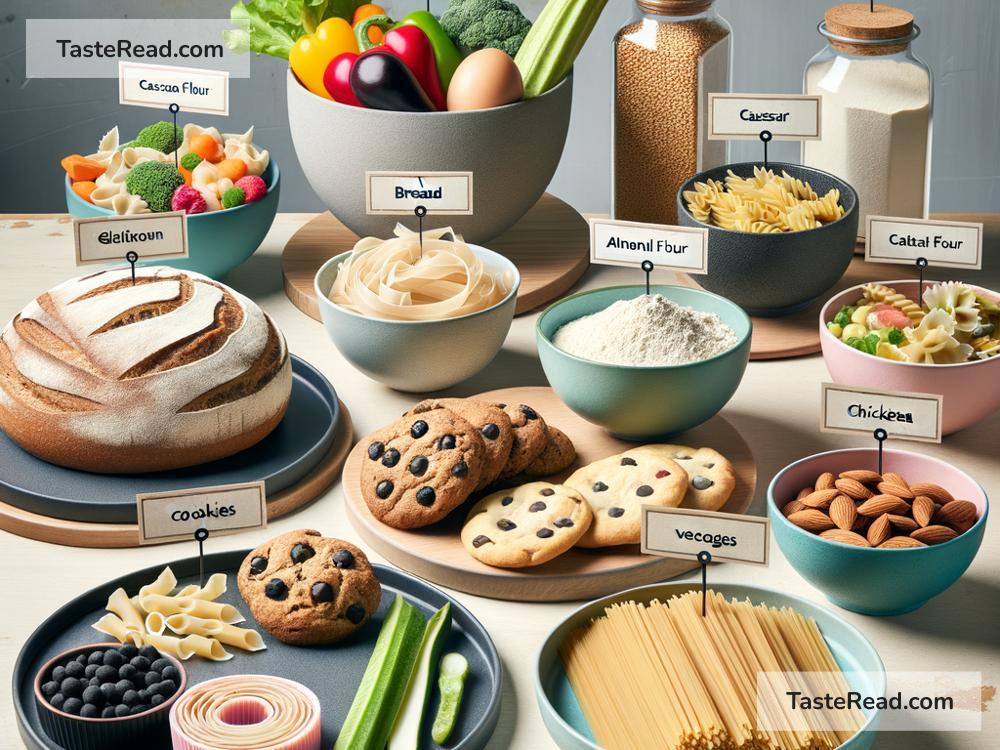The Future of Gluten-Free Foods: What’s Next?
Gluten-free food has become very popular in recent years. What started as a diet for people with celiac disease or gluten intolerance has turned into a global trend. Supermarkets now have shelves full of gluten-free bread, pasta, cereals, and even snacks like cookies and chips. But where is the gluten-free market headed in the future? Will it continue growing, or will it fade away? Let’s explore what we can expect from the future of gluten-free foods.
Why Gluten-Free Foods Matter
To understand the future, it helps to know why gluten-free foods are important. Gluten is a protein found in wheat, barley, and rye. For people with celiac disease, eating gluten triggers an immune reaction that damages the gut. Others, such as those with non-celiac gluten sensitivity, may feel bloated or tired after eating gluten. Gluten-free foods give these individuals a safe and comfortable way to enjoy meals.
But gluten-free products aren’t just for people with medical conditions anymore. Many people choose them thinking they’re healthier or better for digestion. Celebrities and influencers have fueled this trend, encouraging fans to skip gluten even if they don’t need to. This rising demand has helped the gluten-free industry expand rapidly, and experts believe it will keep growing.
New Technologies for Better Gluten-Free Foods
One of the challenges for gluten-free foods is taste and texture. Gluten makes bread fluffy, pizza dough stretchy, and pasta chewy. When gluten is removed, foods can sometimes feel dry, crumbly, or less flavorful. This is why food scientists are working hard to improve gluten-free recipes.
In the future, we’ll likely see gluten-free products with better taste and texture, thanks to advances in food technology. Scientists are experimenting with ingredients like ancient grains (such as quinoa, teff, and sorghum), plant proteins, and gums to mimic the qualities of gluten. Some companies are even using AI (artificial intelligence) to analyze ingredients and create the perfect formulas for delicious gluten-free foods.
Additionally, 3D printing might play a role in creating new gluten-free foods. Imagine being able to print a gluten-free pizza or loaf of bread with just the press of a button! This futuristic concept could revolutionize the way we make and eat gluten-free products.
Increase in Gluten-Free Snacks and Convenience Foods
As more people adopt gluten-free diets, they want convenient options—foods they can eat on the go or grab at the store without a second thought. The future will likely bring even more gluten-free snack options, such as protein bars, chips, and ready-to-eat meals. Gluten-free frozen foods, like pizzas and microwaveable entrees, are already popular, and this trend will continue growing.
Restaurants and fast-food chains are also expanding their gluten-free menus. Some major brands already offer gluten-free buns, pasta, and desserts, but others have been slower to adapt. In the future, it’s likely that gluten-free options will become a standard part of every restaurant menu, just like vegetarian or vegan offerings.
Focus on Sustainability and Health
As awareness about the environment spreads, consumers are asking for sustainable and eco-friendly choices. Gluten-free food manufacturers are paying attention and working to make products that are good for the Earth. Expect to see eco-friendly packaging, organic ingredients, and partnerships with local farmers in the future of gluten-free foods.
At the same time, gluten-free products will likely become healthier. Critics often point out that many gluten-free foods are highly processed or contain lots of sugar and fat to improve taste. To address this, companies are developing healthier gluten-free options with more fiber, protein, and essential nutrients. These improvements will appeal to health-conscious shoppers who care about what they eat.
Rise of Gluten-Free Global Cuisine
Traditionally, a lot of gluten-free foods are inspired by Western diets—think gluten-free pasta, bread, and pizza. But people want variety, and brands are responding by introducing gluten-free versions of global dishes. Gluten-free dumplings, Indian roti, Chinese noodles, and African injera are just a few examples. As the world becomes more connected, there will be more demand for international gluten-free options.
Additionally, cultural traditions offer creative solutions for gluten-free eating. For example, rice-based foods, like sushi or stir-fried rice, are naturally gluten-free and popular in Asian cuisines. Cassava, a gluten-free root vegetable, is commonly used in South America and Africa for baking and cooking. By learning from different cultures, the gluten-free industry can grow in exciting ways.
More Affordable and Accessible Gluten-Free Foods
In the past, gluten-free foods were expensive and hard to find. Special flour and ingredients can be costly, and small-scale production makes prices higher. However, as demand grows and production methods improve, gluten-free foods are becoming more affordable. Big companies are entering the market and offering competitive pricing. In the future, gluten-free foods will likely become accessible to more people, regardless of their budget.
A Market Set to Flourish
The gluten-free food industry shows no signs of slowing down. According to market experts, the industry will grow steadily in the coming years. With new technologies, healthier options, global flavors, and more affordable pricing, gluten-free foods will continue to attract customers beyond just those with gluten sensitivity.
The future of gluten-free foods is bright. Whether you need gluten-free products for medical reasons or simply choose them as part of your lifestyle, you can expect a world of tasty and exciting options ahead. Gluten-free eating is not a passing fad—it’s here to stay, and it’s transforming the way we think about food.
So, if you’re gluten-free, get ready for bigger and better things in the coming years. The future of gluten-free foods is not just promising—it’s delicious!


